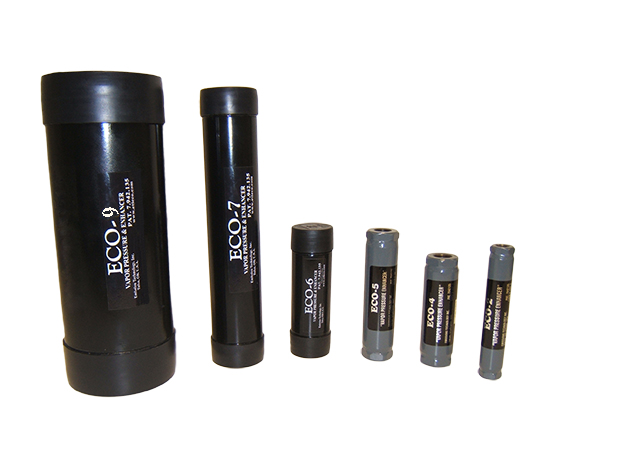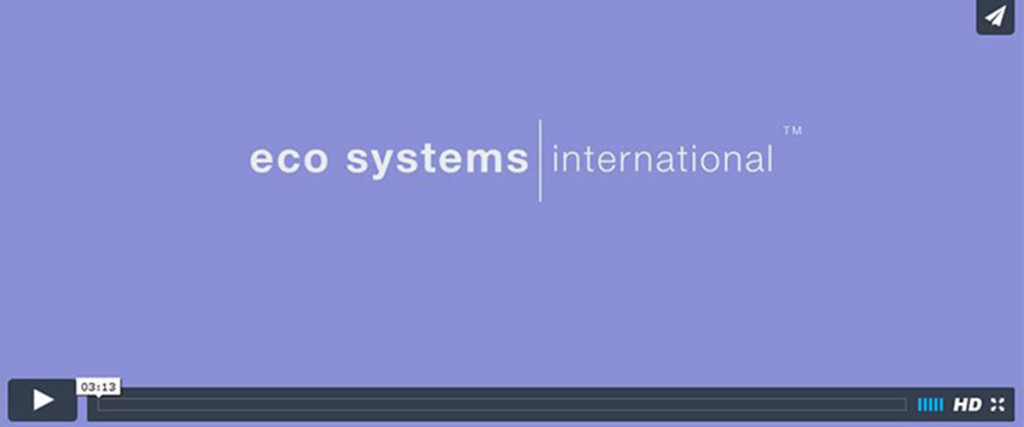ECO Systems International’s emissions reduction unit (ECO unit) reduces toxic emission gases by up to 95%
ECO Unit Description
The ECO Unit (emissions reduction unit) consists of a powder coated steel tube filled with copper mesh on the inside of the tube. The device does not contain magnets, consume chemicals, or use external electrical power; no extra pumping or filtering is required. Once installed it does not require service as there are no moving parts.
The device is produced in several sizes and the same device design is used for liquid fuels and for natural gas. The dimensions of the unit used in standard cars with engine sizes up to 3 litres would be 150 mm in length with a diameter of 25 mm.
The design promotes turbulent flow and extensive metal to fluid surface contact. The device is installed inline to an existing pipeline by cutting out a section, threading the ends and using pipe unions to attach the device or by using the installation pack. It can be installed after or before the fuel filter on the supply pipeline.

How emissions are reduced by using this as your emissions reduction unit
The liquid fuel (hydrocarbons) or gas travels along a fuel line and flows through the unit. Immediately the ECO unit agitates the fuel. This reaction breaks up the hydrocarbon bonds in the fuel and increases its Reid vapour pressure (see table 4 below). Read the full test report here.
Table 4 – sets out the reid vapour pressure results after the unit was tested.
| Liquid Fuel Type | Reid vapour pressure (RVP) before passing through ECO unit | Reid vapour pressure after passing through ECO unit | % increase in Reid vapour pressure |
|---|---|---|---|
| Table 4 Test results as initial R & D carried out by SGS United States Testing Company Inc on 4th March 1991 |
|||
| Diesel | 0.6 psi RVP | 1.0 psi RVP | 66.70% |
| Petrol | 7.6 psi RVP | 8.4 psi RVP | 10.50% |
What is vapour pressure
Vapour pressure is a measure of a liquids ability to dissociate into the gaseous state; combustion occurs with the combination of a hydrocarbon (HC), oxygen (O2) and initial input of energy, however in order for the hydrocarbon and oxygen to combine the hydrocarbon must be in the Vapour state.
The higher Vapour pressure causes the fuel to combust more completely resulting in a more uniform and even burn while generating less un-burnt by products. This process is further enhanced by causing a greater amount of work to be done per unit of fuel in the combustion chamber (fuel economy).
Results from using the ECO Unit
Using any of the ECO Range as your emission reduction unit, benefits you as follows:
• Burning the fuel more completely reduces emissions of hydrocarbons (HC) and carbon monoxide (CO).
o CO emissions are reduced by between 65% to 95%
o HC emissions are reduced by between 50% to 95%
• Burning the fuel more evenly reduces the oxides of nitrogen or more commonly known as NOx emissions.
o NOx gas emissions are reduced by between 16% to 80%
• Particulate Matter (PM) production is lessened by a more complete burning of the fuel and the life of a new diesel particulate filter would be extended by approximately 50%
o 72% reduction in DPF filter regenerations
• By causing the fuel to burn more completely there are less evaporative emissions; more power is derived from the fuel which causes an increase in performance and fuel economy is realised. Less fuel also means less carbon dioxide (CO2) is produced.
Main Benefits of using the ECO Unit
Carbon monoxide is poisonous and at high levels can kill in 3 seconds. ECO unit
Oxides of nitrogen are responsible for asthma, chronic obstructive pulmonary disease and diabetes
Particulate matter is a carcinogenic (tiny particles affecting lungs similar to asbestos), responsible for cancer, asthma, cardiovascular disease, Chronic obstructive pulmonary disease and diabetes. Children and elderly are most at risk.
Reduced H & S risk – mitigate your potential exposure to work place Health & Safety claims arising out of exposure to emissions from burning fuels, in particular diesels and heating oils
Unburned fuel waste is reduced significantly
Less fuel is required to do the same job
Reduced CO2 – Carbon Dioxide reduced by the proportion of fuel saved
The ECO unit extends the life of engines & burners
The engine power and space heating systems perform with improved output
The ECO unit once installed requires no power or consumables
It works with existing fuel lines – no pumping or filtering required

